Invented by Hua Yu, Andreas Herrmann, Marcin Tomasz Kortylewski, City of Hope
CTLA-4 acts as a negative regulator of T-cell activation, suppressing the immune system’s response to prevent excessive immune reactions. However, in certain cases, such as cancer, this regulatory mechanism can be exploited by tumor cells to evade immune surveillance and continue to grow unchecked. This has led to the development of CTLA-4 inhibitors, which block the interaction between CTLA-4 and its ligands, thus unleashing the immune system to attack cancer cells.
Aptamers, on the other hand, are short, single-stranded DNA or RNA molecules that can bind to specific target molecules with high affinity and specificity. They are often referred to as “chemical antibodies” due to their ability to recognize and bind to specific targets, including proteins like CTLA-4. Aptamers offer several advantages over traditional antibodies, including smaller size, lower immunogenicity, and easier synthesis and modification.
The combination of CTLA-4 inhibition and aptamers has led to the development of CTLA-4 aptamer conjugates, where the aptamer is linked to a therapeutic payload, such as a cytotoxic drug or a nanoparticle. These conjugates can specifically target CTLA-4-expressing cells, including cancer cells, and deliver the therapeutic payload directly to the site of action.
The market for CTLA-4 aptamer conjugates is expected to witness significant growth in the coming years. This can be attributed to several factors, including the increasing prevalence of cancer worldwide, the growing understanding of the role of immune checkpoints in cancer progression, and the need for more targeted and personalized cancer treatments.
One of the key advantages of CTLA-4 aptamer conjugates is their potential to overcome the limitations of current CTLA-4 inhibitors, such as immune-related adverse events. By specifically targeting CTLA-4-expressing cells, aptamer conjugates can minimize off-target effects and reduce the risk of systemic toxicity.
Furthermore, the versatility of aptamers allows for the development of different types of CTLA-4 aptamer conjugates, including those carrying cytotoxic drugs, radioisotopes, or imaging agents. This opens up opportunities for combination therapies, where the aptamer conjugate can not only inhibit CTLA-4 but also deliver additional therapeutic modalities to enhance the anti-cancer effect.
Several companies are actively involved in the development of CTLA-4 aptamer conjugates. These include both established pharmaceutical companies and biotechnology startups. The market is highly competitive, with companies striving to develop novel and differentiated products to gain a competitive edge.
In conclusion, the market for CTLA-4 aptamer conjugates is poised for significant growth in the coming years. The combination of CTLA-4 inhibition and aptamers offers a promising approach to cancer immunotherapy, with the potential to improve patient outcomes and reduce side effects. As research and development efforts continue to advance, we can expect to see more innovative CTLA-4 aptamer conjugates entering the market, providing new treatment options for cancer patients.
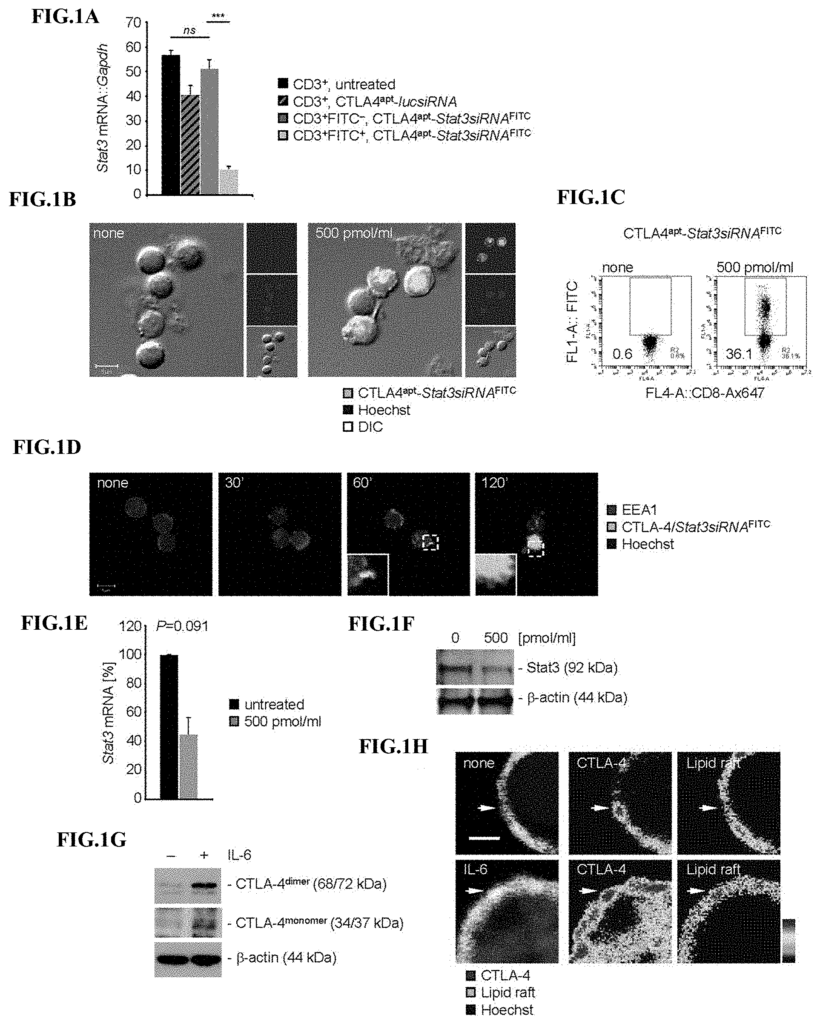
The City of Hope invention works as follows
The nucleic acids compounds are useful in targeting CTLA-4 expressing cells and modulating the cell activity of CTLA-4 expressing cells. Compositions may be included in pharmaceutical compositions for the treatment of cancers, inflammatory diseases and infectious diseases.
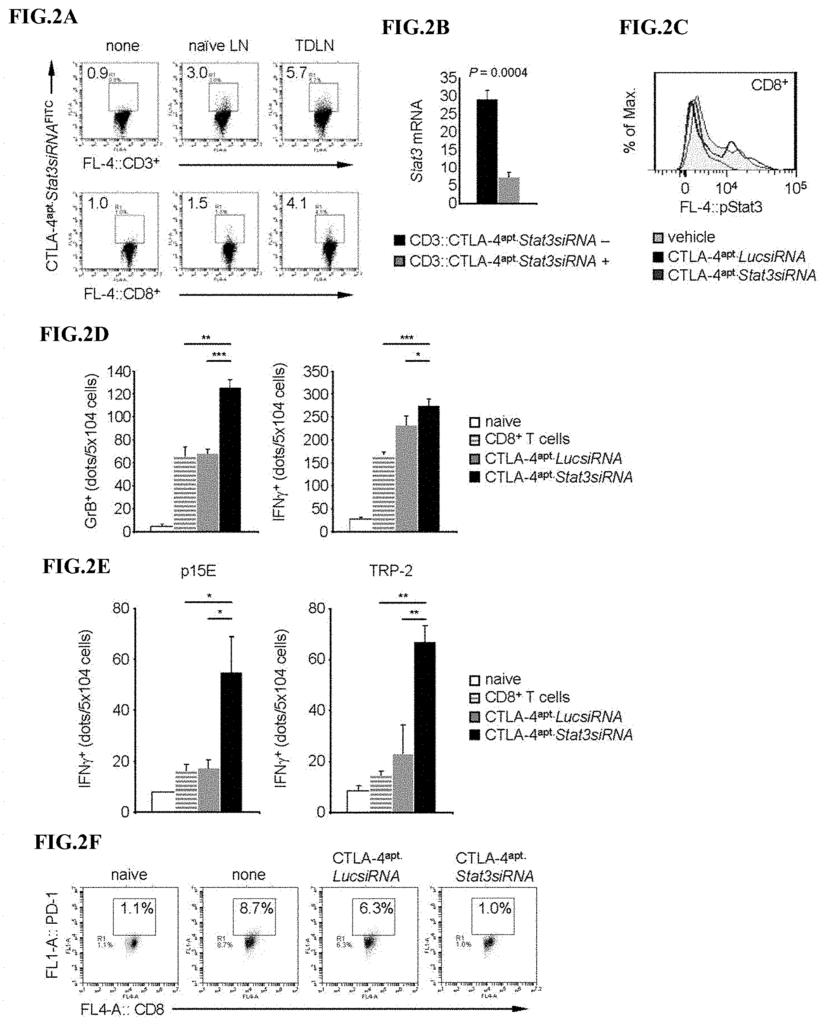
Background for CTLA-4 aptamer conjugates
Recent promising human results of immunotherapies to block immune checkpoints such as cytotoxic T-lymphocyte-associated antigen 4 (CTLA4) and programmed cell death protein 1 (PD-1) (Pardoll, D. M., Nat Rev Cancer 12:252-264 (2012); Pardoll, D. M., Nat Immunol 13:1129-1132 (2012); Keir, M. E. et al., Annu Rev Immunol 26:677-704 (2008)) illustrate the importance of targeting molecules that inhibit T cell-mediated antitumor immunity. The immunosuppressive microenvironment of tumors can hinder the success or failure of immunotherapies. There are a number of intracellular checkpoints that have great potential to be targets for potent antitumor immune responses. STAT3, as an example, is a signaling mediator that has been found to be crucial in both tumor-associated immune and tumor cells. (Yu, H. In tumor cells, STAT3 promotes tumor cell survival/proliferation, invasion, and immunosuppression (Yu, H., and Jove, R., Nat Rev Cancer 4:97-105 (2004)). STAT3 is activated persistently in the tumor microenvironment by immune cells including T cells. (Kujawski M. et. al. Cancer Res 70:9599-9610 (2009); Yu H. et. al. Nat Rev Immunol 7:30-41 (2007)). CD4+ T regulatory cells (TRegs) can induce peripheral tolerance, suppressing CD8 T cell functions in various diseases including cancer (Kortylewski, M. et al., Nat Med 11:1314-1321 (2005); Curiel, T. J. et al., Nat Med 10:942-949 (2004); Shevach, E. M., Nat Rev Immunol 2:389-400 (2002); Chen, M. L. et al., Proc Natl Acad Sci USA 102:419-424 (2005); Mempel, T. R. et al., Immunity 25:129-141 (2006); Arens, R. and Schoenberger, S. P., Immunol Rev 235:190-205 (2010)). Activated STAT3 on T cells is responsible for expanding tumor-associated TRegs. (Kortylewski M. et. al., Nat Med 11, 1314-1321, (2005); Pallandre J. R. and Schoenberger S. P., Immunol Rev 235:190-205 (2010)). Moreover, Stat3?/? Stat3?/?
As a transcription factor that lacks its own enzymatic activities, STAT3 presents a challenge for both antibodies and small-molecule drugs” (Yu, H. and Jove R. Nat Rev Cancer, 4:97-105, 2004; Darnell J. E. Nat Med, 11:595-596, 2005; Darnell J. E. Jr. Nat Rev Cancer, 2:740-749, 2002). Recent pioneering research has demonstrated the feasibility of delivering siRNA to tumor cells in vivo. (McNamara J. O. 2nd et. al., Nat Biotechnol 24, 1005-1015 (2006)). Chimeric RNAs and DNA-RNAs, consisting of a fusion of a siRNA with nucleic acids, that bind to a cell surface ligand, or intracellular receptor, with high affinity have shown therapeutic efficacy on preclinical models. Most of these siRNA delivery techniques involve the fusion between siRNA and an aptamer. This is a structured RNA that has a high affinity for epitopes found on epithelial or tumor cells. Recent applicants described a technique for delivering siRNA efficiently into immune cells. This was achieved by attaching an siRNA with a CpG oligonucleotide that binds its cognate receptor TLR9. TLR9 is intracellularly expressed in myeloid and B cells as well as tumors expressing TLR9 including human leukenuc cell (Kortylewski M. et. al. Nat Biotechnol 27, 925-932 (2009) Zhang Q. et. al. Blood 121, 1304-1315 (2013)). The CpG siRNA approach, however, does not target T cells directly (Kortylewski M. et. al., Nat Biotechnol 27, 925-932 (2009) )).”; Zhang Q. et.al., Blood 121:1304-1315 (2013)).
Recently, a method for delivering siRNA to CD4 T-cells has been developed. (Wheeler L. A. et. al. J Clin Invest 121 :2401-2412, 2011). In cancer immunotherapy it is important to regulate both CD8+ and CD4+ effector cells. It is also plausible that targeting subpopulations CD8+ or CD4+ T-cells in the tumor microenvironment rather than all T-cells in general would provide greater antitumor effectiveness while reducing toxicities. It is known that CTLA4 expression is dysregulated both in tumors and tumor-associated T-cells, and this is a promising target for immunotherapy (Santulli, S. and colleagues, Cancer Res, 63, 7483-7489, 2003). CTLA4 blocking is believed to have a broad antitumor effect, mainly by increasing the number of helper T-cells. (Chen, M. L. et. al. Proc Natl Acad Sci USA 102.419424 (2005); Wing, K. et. al. Science 322.271.75 (2008); Byrne W. L. et. al. Cancer Res 71.6915-6920 (2012); Peggs K. S. However, activated/exhausted CD8 T cells also express CTLA4 (Walunas, T. L. et al., Immunity 1:405-413 (1994); Teft, W. A. et al., Annu Rev Immunol 24:65-97 (2006); Wherry, E. J. et al., Immunity 27:670-684 (2007)).
There is a need for compositions and techniques that deliver modulators of cell activities (e.g. anti-tumor, antiobesity) to cells to inhibit diseases like cancer, metastasis, or metabolic diseases. These and other art needs are cured by the nucleic acids compounds and methods provided herein.
Provided are, among other things, nucleic acids useful for targeting CTLA-4 expressing cells and modulating the cell activity of CTLA-4 expressing cells. Compositions may be included in pharmaceutical compositions for the treatment of various diseases. The compositions herein can be used to treat cancer, infectious diseases, metabolic diseases, and inflammatory diseases.
In one aspect, a nucleic-acid compound containing a monomeric CTLA-4 nucleic-acid aptamer conjugated with a cell activity modulating RNA is provided.
In another aspect, mammalian cells containing a nucleic-acid compound are provided.
In another aspect, embodiments of a cellular receptive bound to a nucleic-acid compound are provided.
The present invention includes embodiments of a pharmaceutical composition that contains a nucleic-acid compound and an excipient acceptable to pharmaceutical companies.
In another aspect, it is possible to treat a disease by administering a therapeutically effective amount of a nucleic acid compound as described herein including embodiments thereof. The method involves administering to the subject a therapeutically-effective amount of a nucleic compound as described herein, including embodiments thereof.
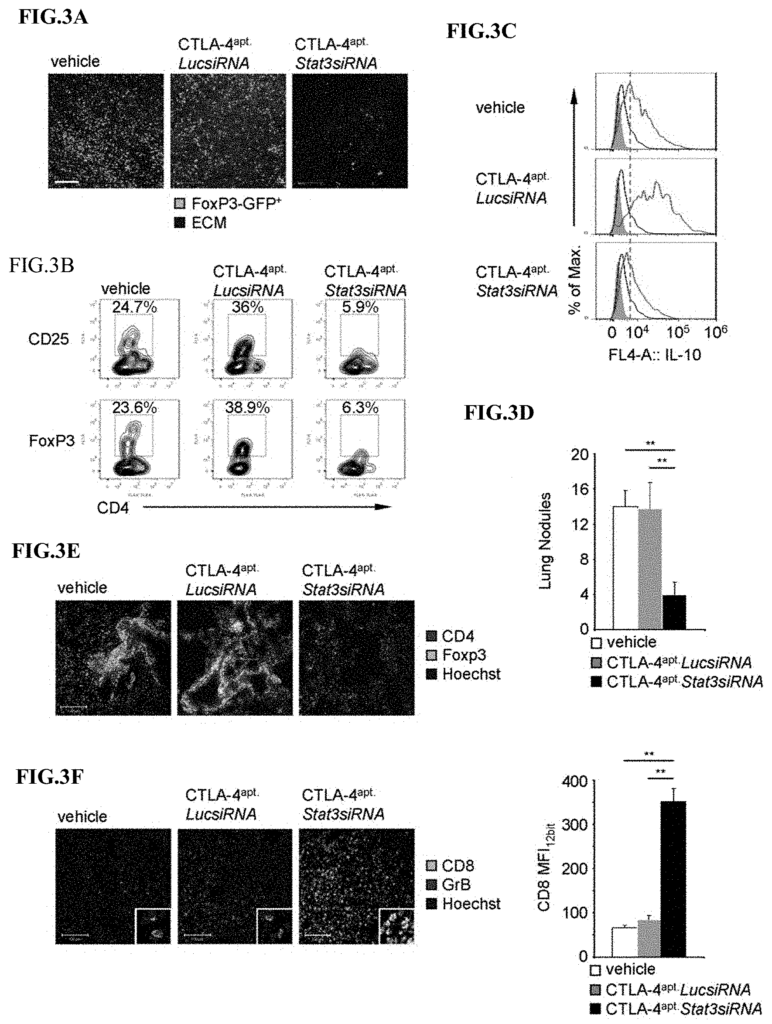
In another aspect, it is possible to inhibit the growth of cancer cells. The method comprises contacting a cell of a cancer with a nucleic compound, as described herein and in embodiments thereof. This inhibits the growth of the cell.
In another aspect, it is possible to inhibit the activity of a T-cell associated with a tumor. The method involves contacting a T-cell tumor with nucleic acids as described herein, including its embodiments. This inhibits the activity of the T-cell tumor.
In another aspect, it is possible to stimulate the immune system of an individual who needs such stimulation. The method comprises administering an effective amount to a nucleic compound as described herein, including embodiments thereof, to a subject in order to stimulate the immune system.
In another aspect, it is possible to inhibit a protein’s activity within a cell. The method comprises contacting a single cell with the nucleic acids compound, as described herein and in its various embodiments. The antisense is expressed by the contacted cell, resulting in a cellular nucleic antisense acid. “The cellular antisense is allowed to inhibit the activity of a cell’s protein.
Definitions
It will be clear to those who are skilled in the art, that the various embodiments of the invention and their aspects have been shown and described. Those skilled in the arts will be able to make a variety of changes and substitutions without deviating from the invention. “It should be understood that alternative embodiments to those described herein can be used in practice of the invention.
The section headings are used only for organization purposes and should not be construed to limit the subject matter. The entire content of all documents or portions thereof cited in this application, including but not limited to patents, patent applications and articles, books, manuals and treatises, is hereby incorporated in full by reference.
The abbreviations herein are used in the context of chemical and biological arts. The chemical formulae and structures described herein have been constructed in accordance with the standard rules for chemical valency that are known to the chemical arts.
Unless defined differently, technical and science terms used herein will have the same meaning that a person with ordinary skill in this field would understand. See, e.g., Singleton et al., DICTIONARY OF MICROBIOLOGY AND MOLECULAR BIOLOGY 2nd ed., J. Wiley & Sons (New York, N.Y. 1994); Sambrook et al., MOLECULAR CLONING, A LABORATORY MANUAL, Cold Springs Harbor Press (Cold Springs Harbor, N Y 1989). In the practice of this invention, any methods, materials and devices similar to or equivalent to those described in the present disclosure can be used. These definitions have been provided to help you understand certain terms that are used often in this disclosure. They are not intended to limit the scope.
The term “alkyl” is used to describe a straight (i.e., unbranched) or branched non-cyclic carbon chain (or carbon), or a combination thereof. This can be fully saturated, mono- or polyunsaturated and include divalent radicals. By itself or in conjunction with another substituent (e.g. C1-C10), the term “alkyl” means a non-cyclic straight or branched carbon chain, or a combination thereof. The carbon chain can be mono-, polyunsaturated, or divalent, and have the designated number of carbons (i.e. C1-C10 is one to ten). Saturated hydrocarbon radicals can include groups like methyl, propyl (including isopropyl), nbutyl (including t-butyl), isobutyl and sec-butyl. They also include homologs of npentyl and other isomers. Unsaturated alkyl groups are those that have one or more triple or double bonds. Unsaturated alkyl group examples include but are not restricted to vinyl, 2-propenyl crotyl 2-isopentenyl 2-(butadienyl), 2-(pentadienyl), 2-(butadienyl), 2-(2,4-pentadienyl), 3-(1,4 -pentadienyl), and higher homologs. Alkoxy is an alkyl that has been attached to the rest of the molecule by an oxygen linker.
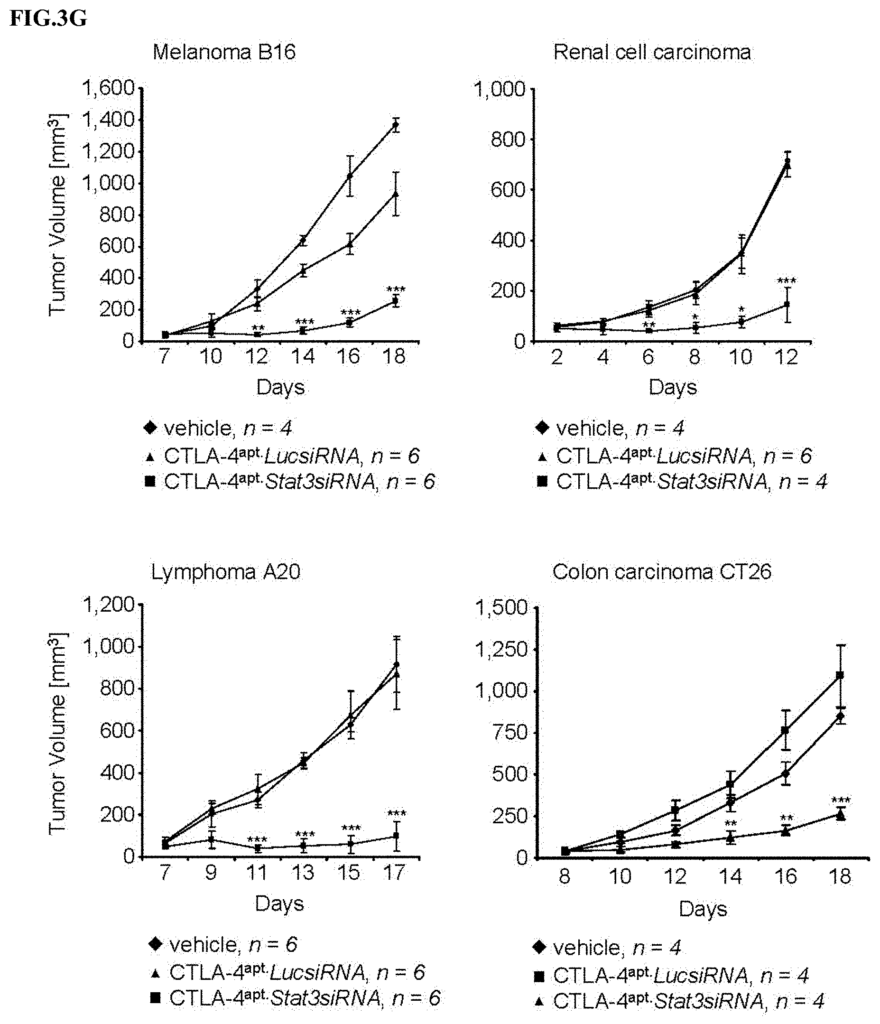
The term “alkylene” is used to describe a divalent radical derived from an alkyl, as exemplified by the example but not limited to?CH2CH2CH2CH2? By itself or in conjunction with another substituent (unless otherwise stated), the term ‘alkylene’ means a divalent radical that is derived from an allyl. An example, but not exclusive to, this radical would be?CH2CH2CH2CH2?”. Alkyl groups (or alkylenes) typically have between 1 and 24 carbon atoms. In the present invention, those having 10 or less carbon atoms are preferred. A “lower alkyl” A?lower-alkyl? It is an alkyl group with a shorter chain, usually having 8 or fewer carbons. The term “alkenylene” is used. By itself or in conjunction with another substitute, the term?alkenylene’ means, unless stated otherwise, a divalent radical deriving from an alkene.
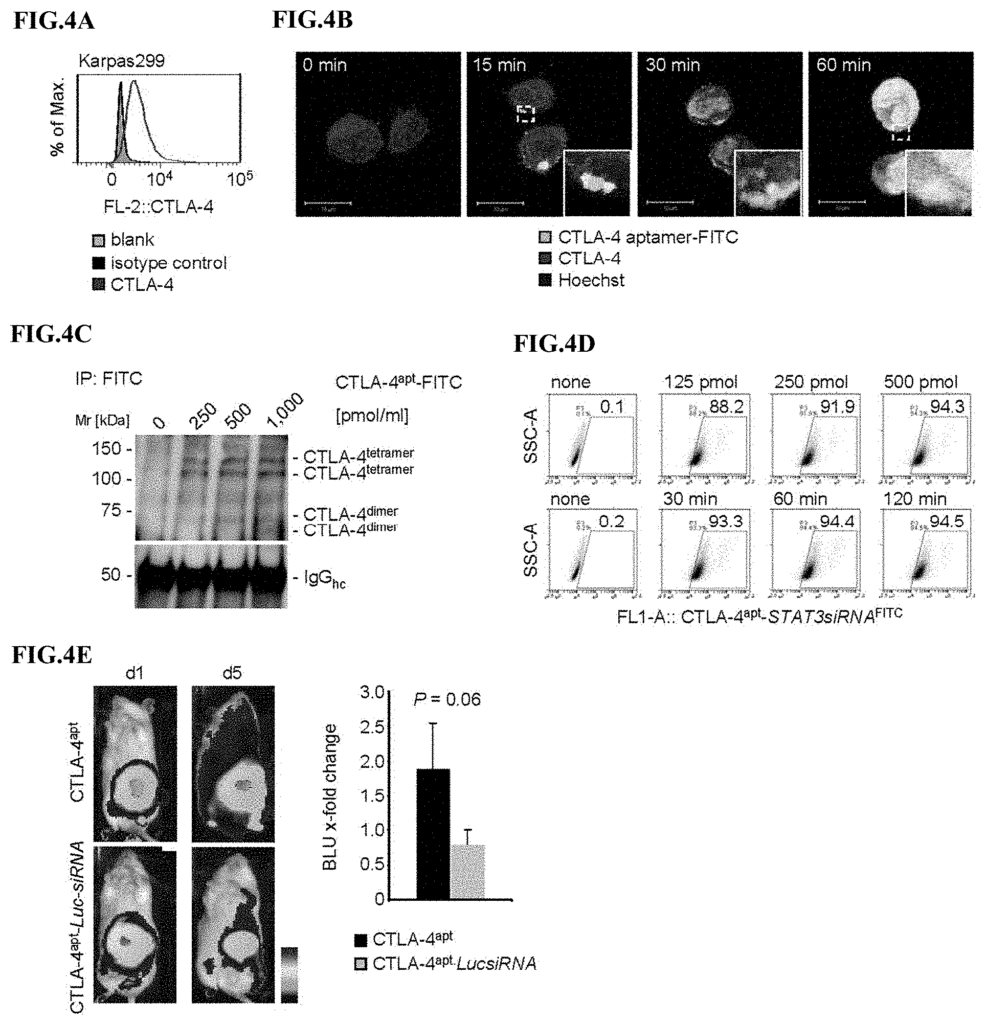
Click here to view the patent on Google Patents.
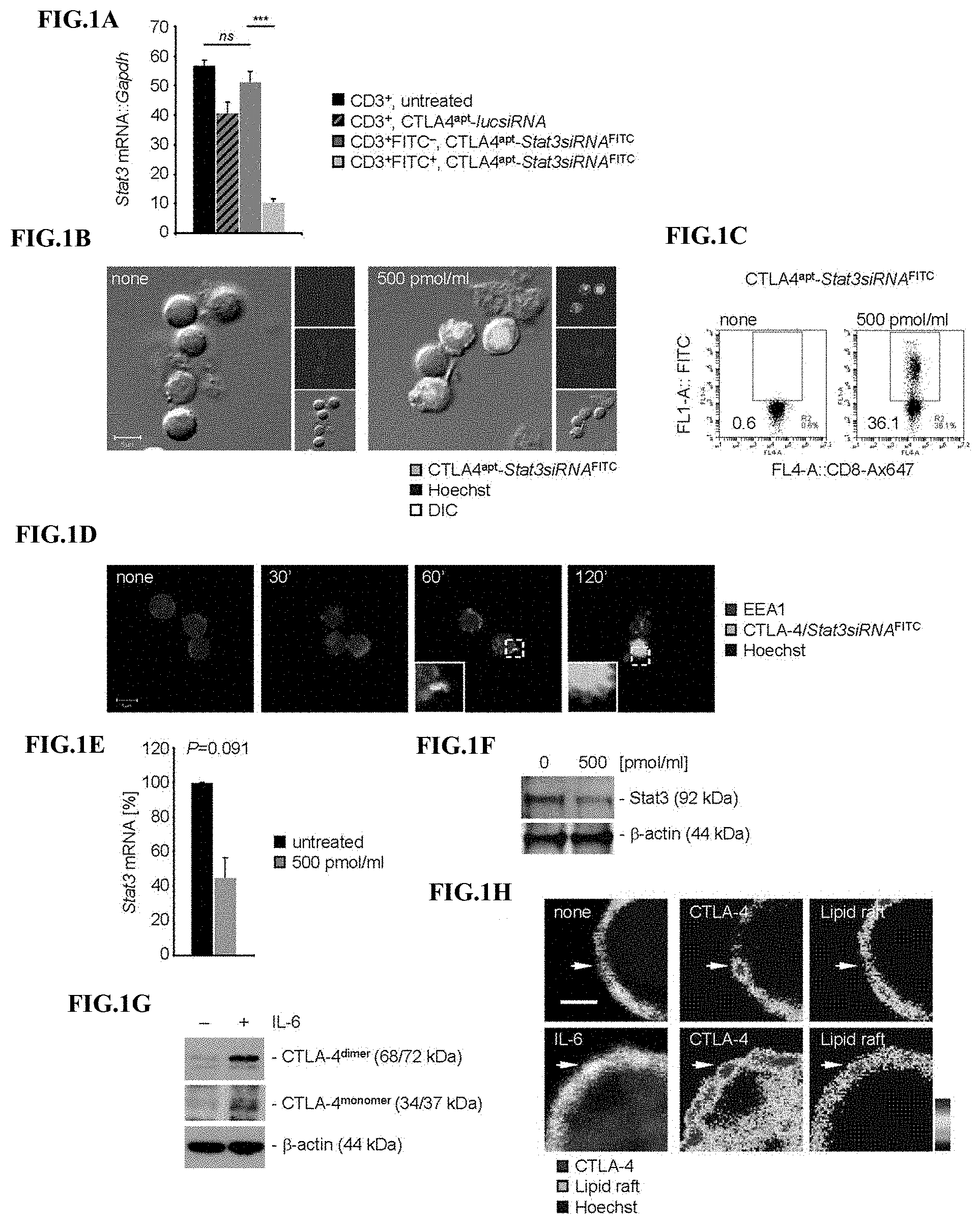
Leave a Reply